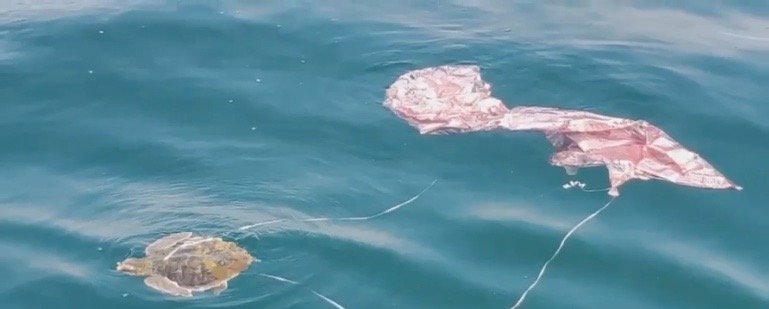By Lucie Lagodich ~ Suffolk County Executive Steve Bellone signed §310-2 into law, banning the intentional release of helium or lighter-than-air gas balloons on Sept. 27, 2019. The law carries stiff fines of up to $1,000 to those who violate it. Yet our beaches are still littered with them, and tragic stories of marine life mortality due to balloons floating in local waters still persist. One need not look further than beyond county boundaries to understand way this may be the case.Over the last decade more than 20 separate bills aimed at reducing balloon pollution have been introduced to the New York State (NYS) Senate and none have made it to the floor for a vote. First introduced in the NYS Senate in the 2009-2010 session, the first handful of bills pertaining to reducing balloon waste prohibited the release of 25 or more balloons in a 24-hour period with more recent ones prohibiting the intentional release of balloons altogether.“I have a strong environmental voting record during my 26 years in elected office, I certainly have worked to eliminate plastics and I’m fully supportive of the legislation to ban groupings of balloons,” said New York State Senator Phil Boyle, representing the Fourth Senate District of New York State, which includes parts of Islip, Babylon, the Islip part of Fire Island and Babylon town beaches. “I will certainly be advocating for it, so it already has bipartisan support.”Boyle added that he is unsure of why a bill has yet to pass, but he is hopeful that it will pass soon. Countless constituents have contacted Boyle’s office in support of bills that reduce balloon pollution, plastic waste and fight climate change, but Boyle has never received a call against environmental legislation.“I can only read between the lines … what I’ve noticed from many years lobbying and doing advocacy work,” said John Turner, senior conservation policy advocate for Seatuck Environmental Association. “Reading the tea leaves, the lack of action about a bill in the state legislature over the span of a number of years is almost invariably because of some interest group that is opposed, and they’ve been able to convince political leadership either in the Assembly or State Senate not to advance the measure as a result.”Based in Islip, Seatuck is a nonprofit with a focus on conserving Long Island wildlife through advocacy, research and action. The organization has previously supported legislation from a local to state level that involve pollution, plastic waste and animal conservation and they support the prohibition of the intentional release of lighter-than-air balloons.“I have seen the bills and I can’t believe that it hasn’t become a strong law already, it’s sad. I think it’s a no brainer in my mind. I do know that certain municipalities have already banned such releases,” Boyle said. “I think we definitely need to do it on a statewide level in New York and be a national leader and I think that it should be a federal bill at some point in time.”Ariel Santos, the policy program coordinator at Seatuck, added that towns like Southampton have recently banned the sale of helium-filled balloons altogether – signed into law at the end of June – the sale, distribution as well as the intentional release of balloons within town limits will go into effect in 2022.However the problem with balloon pollution goes well beyond the state level.“It is not unusual at all for a balloon that might be released in, for example, Central Pennsylvania to get caught up in strong winds and be transported dozens or more likely hundreds of miles and then ultimately landing in the Atlantic Ocean off of Long Island and wreaking havoc to the animals there,” Turner said.Boyle agreed, explaining that both limiting the release of balloons now and the development of greener technology is necessary.“We need to come up with technology where the next thing comes that replaces plastic and I can’t wait for that day,” Boyle said. “It’s not just a concern for Washington D.C., but on an international level … these plastics last for thousands of years and we need to make sure that we limit them to the greatest extent possible.”































